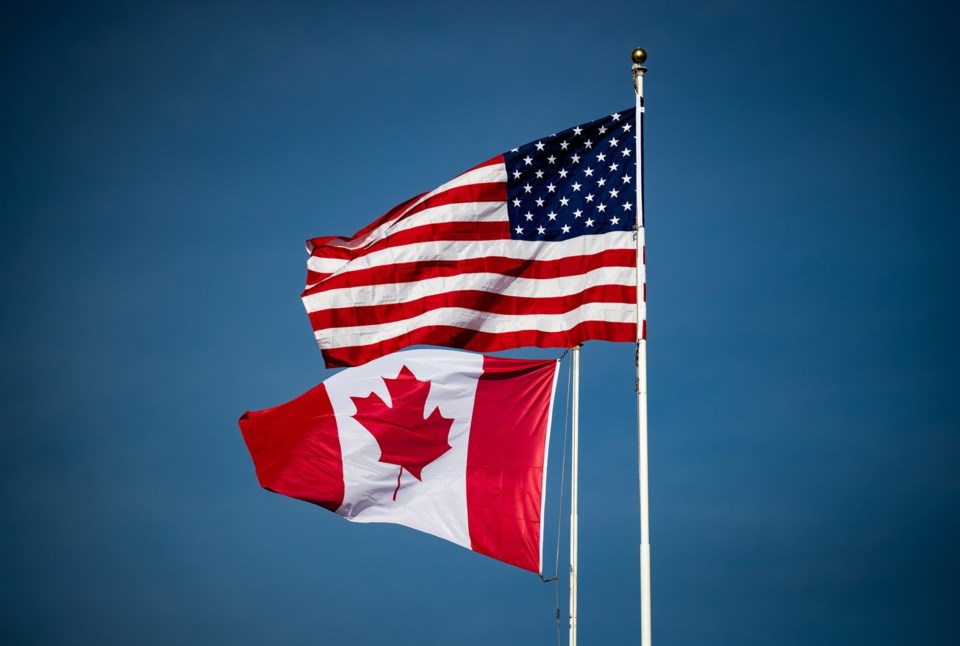OTTAWA — When you peel back the many layers of tariffs and exemptions imposed by the United States, the effective tariff rate on Canada looks much lower than the headline figures suggest, some economists say.
RBC senior economist Claire Fan said in an interview that the effective tariff rate is an average of the import duties paid on goods heading to the United States that accounts for exemptions tied to the Canada-U.S.-Mexico Agreement on trade, or CUSMA.
While U.S. President Donald Trump ramped up blanket tariffs on Canada to 35 per cent at the start of the month, that move maintained an exemption for goods compliant with the CUSMA pact.
RBC estimates the effective tariff rate on Canadian goods is closer to six per cent today. BMO's calculations from the start of the month place that figure a little higher, at around seven per cent.
The Bank of Canada said in late July — before Trump's latest escalation — that it estimated the effective U.S. tariff rate was around five per cent, up from almost nothing at the start of the year.
RBC's calculation is based on export volume data from 2024. Other sets of data offer slightly different measures of the tariff strain facing Canadian businesses.
Fan said that, according to data published by the U.S. Census Bureau, Canada's effective tariff rate was roughly 2.4 per cent in June, before the latest wave of higher tariffs came into effect.
That figure captures the actual duties paid at the Canada-U.S. border, she said, and may fall short because of delays in reporting and general confusion over tariff levels among businesses.
"It's not surprising that there's a certain amount of disarray at customs," she said.
The effective tariff rate could also be lower in practice as U.S. businesses shift away from importing Canadian goods that carry the highest levels of tariffs, Fan said.
While the effective tariff rate offers a simple explanation for the total level of U.S. tariffs facing Canada, Fan warned that it can underestimate the on-the-ground impact.
"It's not the best gauge of the severity of tariffs, but it's one of the only ones that we have, unfortunately," she said.
CUSMA compliance does not broadly exempt Canadian goods from sector-specific tariffs like those levied under Section 232 of U.S. trade legislation.
Ongoing U.S. tariffs of 50 per cent on steel and aluminum, for example, will have an outsized impact on those sectors going forward, Fan said.
At roughly six per cent, Canada's effective tariff rate is well below the cumulative rate facing the United States' other trading partners right now, which RBC pegs at around 15 to 17 per cent.
"That's the key point right there, which is why we're still one of the countries that's facing the least amount of U.S. tariffs right now," Fan said.
It's not fully clear to economists how much of the Canadian goods entering the United States are tariff-free under CUSMA.
The Bank of Canada said in its monetary policy report in late July that it assumes Canadian businesses will collectively achieve CUSMA compliance on 95 per cent of non-energy goods under a scenario that sees the tariff situation hold steady over the coming three years.
The central bank doesn't assume perfect compliance, since some businesses might not want to go through the administrative burden of securing a carve-out.
But Fan said the CUSMA exemption is the critical element giving Canadian exporters a "competitive advantage" over other highly tariffed economies.
Oxford Economics' lead economist Adam Slater said in a report issued Monday that, despite tremendous uncertainty tied to disruption of trade with the United States, Canada and Mexico may extract some benefit as long as CUSMA remains active.
That trade agreement is up for renegotiation in 2026.
Based on U.S. Census Bureau data from June, Oxford calculates the effect tariff rate for China at 35 per cent, Japan at 15 per cent and the United Kingdom at eight per cent.
The firm suggests that — at 2.5 per cent — Canada's effective tariff rate is a bit higher than RBC's estimate based on the U.S. Census Bureau data, while Mexico's effective tariff rate is estimated at four per cent.
"If the relatively low tariffs apparently being paid on imports from Mexico and Canada persist, these two economies could pick up some benefits from shifts in supply chains, although uncertainties over the endgame for tariffs and the future of the (CUSMA) deal will be near-term drags," Slater wrote.
This report by The Canadian Press was first published Aug. 12, 2025.
Craig Lord, The Canadian Press



